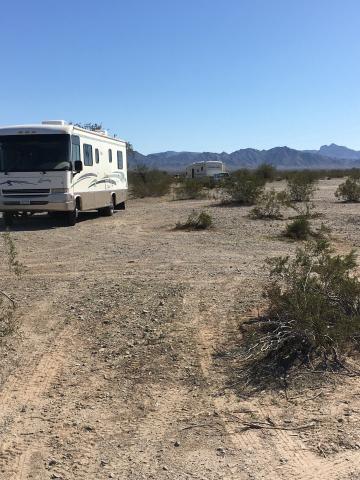
Boondocking 101
Posted By:Sarah Pruzansky

| Boondocking basics and tips. The www.campbase.com website includes free campgrounds, Walmart camping, and casino camping. |
Boondocking 101
Whether you’ve always dreamed of living off the grid and out on the open road, taking your RV deep into the beautiful wilderness, or simply camping for free, boondocking may be the next step to elevating your travel experience.
Otherwise called dry camping, independent parking, free camping, wild camping, dispersed camping, and more, boondocking is your escape to an independent lifestyle (or simply a low-cost, scenic vacation) as you journey outside of campgrounds and into your very own secluded piece of nature.
Extra benefit: You’ll be reducing your carbon footprint while you camp!
Setting up shop with no amenities or hookups can deter even the most seasoned RVer though. Travelling into the unknown can be scary.However, fear shouldn’t stop you from living the nomad van lifestyle. It just takes a little bit of know-how and practice.Here are the basics you need to know to have a successful boondock camping trip.
What is Boondocking?
Boondocking can be done by simply pitching your tent, but is ideal for those with RVs. Essentially, you just drive, find a spot, and camp!
The catch? There are no hookups such as water or electricity, so knowing how to boondock is crucial before you get started.
Where Can You Boondock?
There are designated dispersed camping areas across the U.S. Look out for public lands (most are free or low cost) from the U.S. Forest Service, National Park Service, Bureau of Land Management, etc. There are a few apps that can help you locate these lands and you can also find campgrounds on CampBase’s website but, when in doubt, just call the public lands office. They will point you in the right direction.
Boondocking Tips
If you want to boondock, here are some helpful beginner tips:
- Safety first: Get the right equipment like flashlights, bear spray, a loud horn, etc. and know how to protect yourself in the wilderness.
- Keep your eye on the weather: Avoid boondocking in excessively hot or cold conditions. While comfort is important, so is power consumption. It’s best to boondock in conditions that require minimal AC, fans, and heat. Optimal boondocking weather conditions are in the 60s-70s F.
- Be prepared: Just like any form of travel, make sure that you have everything you need:
- Fresh water
- Emptied gray and black water tanks (You will need to find designated dump stations to properly empty your tanks. It is illegal to dump black water in any other way, and gray water should be disposed of carefully if done differently. Here is a YouTube video on ways to dispose of your gray water.)
- Power (whether in the form of propane, batteries, a generator, or a solar power setup)
- Fully stocked fridge (preferably food with minimal packaging to reduce trash build-up, which you will need to store in a closed container indoors until you can find a proper location to dump your trash)
- Necessary lighting (both indoor and outdoor)
- Learn how your RV works and how to maintain and operate onboard equipment.
- Have a safety net: Practice in your driveway or in a Walmart parking lot (known as Wallydocking), go to a campsite with hook-ups but only use them in the case of an emergency, camp at RV shows or sporting events, and/or boondock for short periods of time before planning longer camping trips.
- Learn more camping tips from CampBase.
And this is just the beginning. Boondocking is a freeing travel experience like no other. But it takes some skill before you can get it right.
But with practice and a passion for the outdoors, you’ll soon be basking in your own hidden paradise.
Date Posted:March 5, 2020
Copyright © 2012 All Rights Reserved Website Design and Developed by Futerox Interactive
